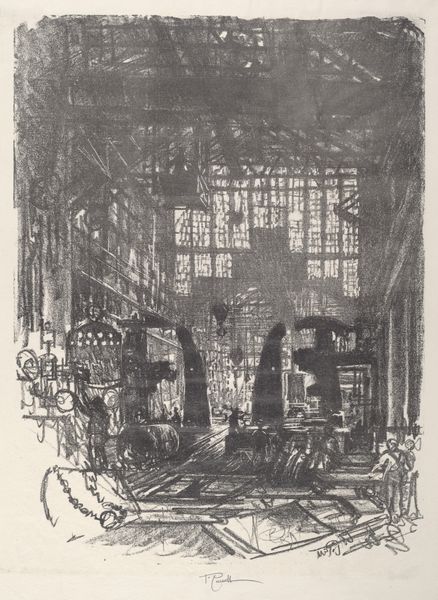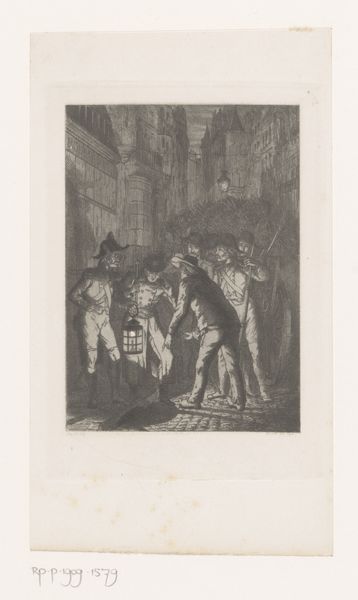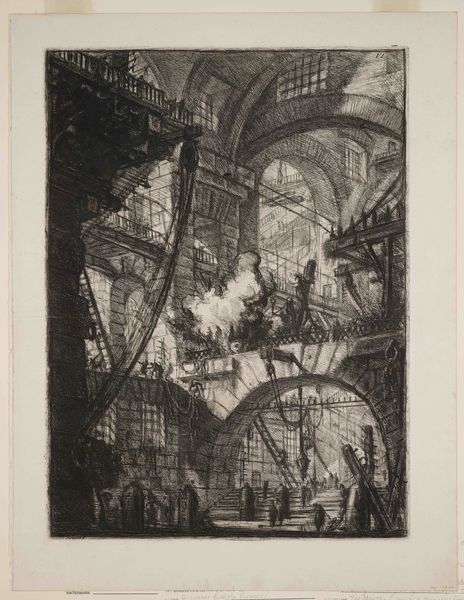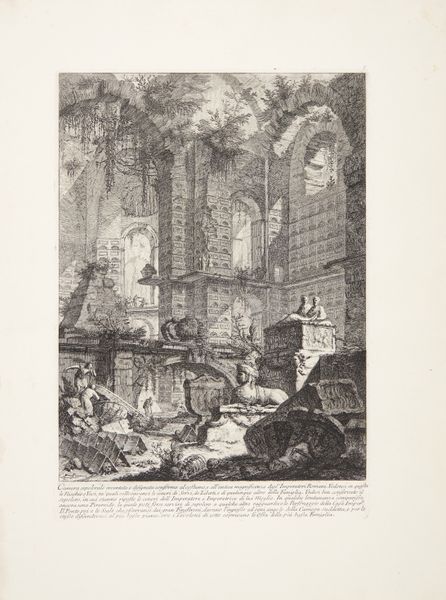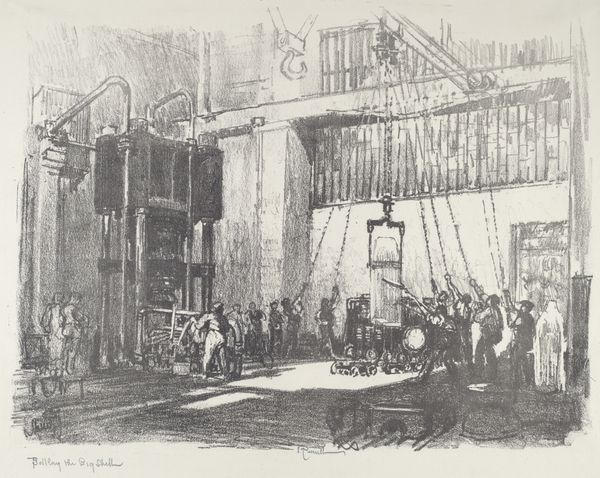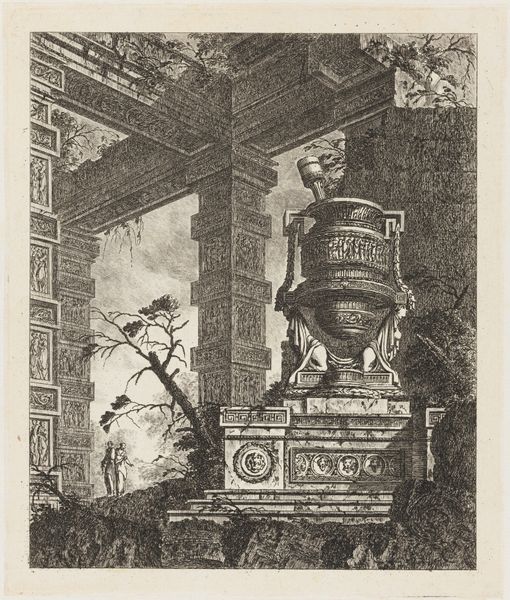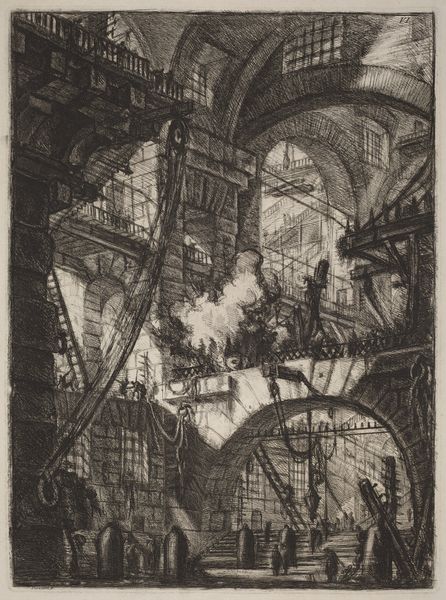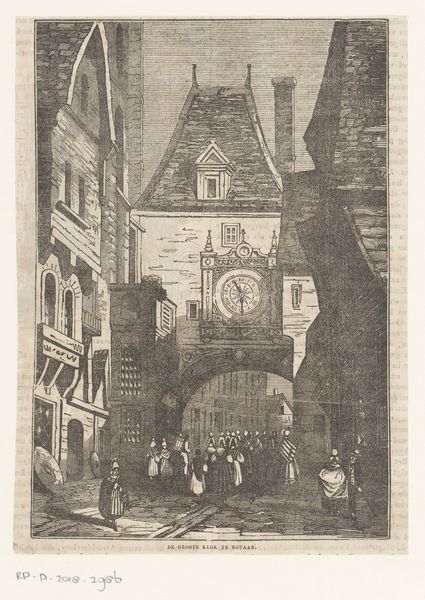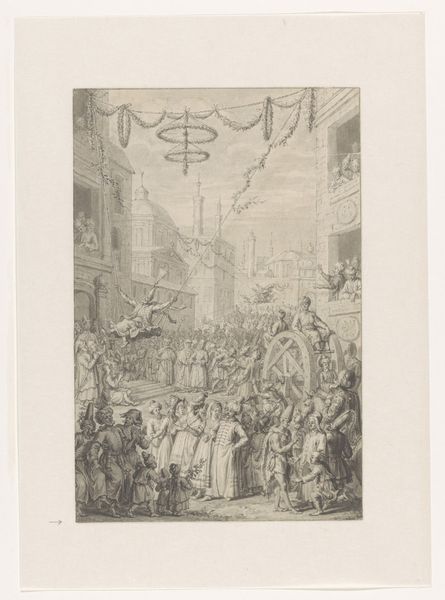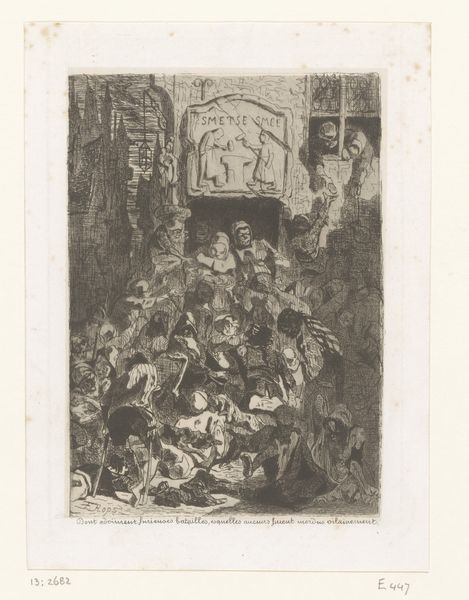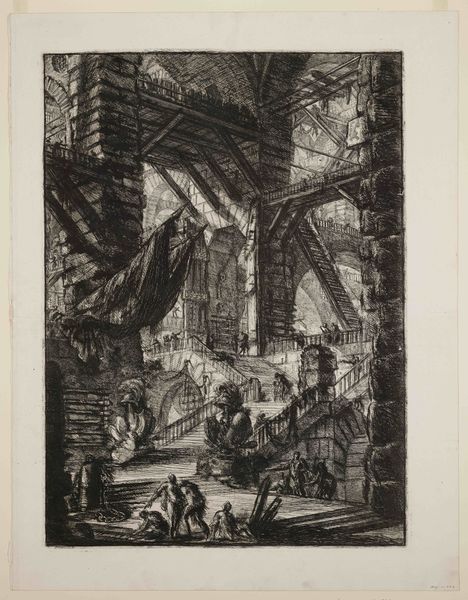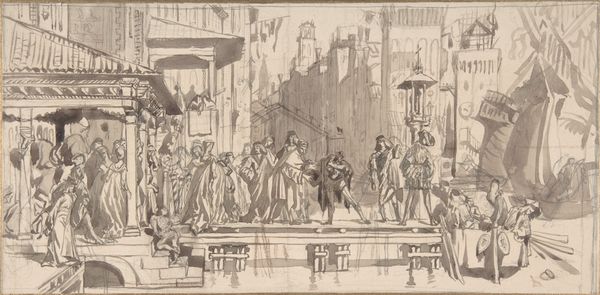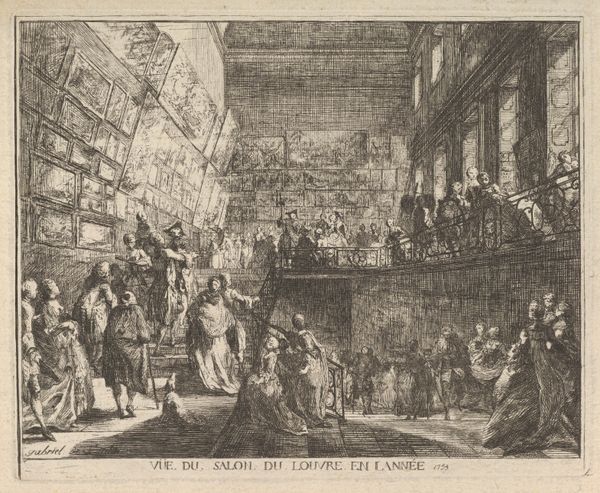
print, etching, engraving
# print
#
etching
#
history-painting
#
engraving
#
modernism
#
realism
Copyright: National Gallery of Art: CC0 1.0
Editor: This etching by Joseph Pennell, “Forging Shells, The Slaves of the Wheel,” created around 1917, depicts laborers working with heavy machinery, perhaps making artillery shells. The figures seem to be caught in a frantic dance of labor under the dark looming presses. What symbolic weight does this image carry for you? Curator: The overwhelming presence of machinery evokes ideas about man’s relationship to industrialization. Notice the dominance of the mechanical structure – the “wheel” in the title - against which the workers seem small, even enslaved, which makes one consider what it represents. Are these men serving the machine or is the machine serving them? Editor: The composition certainly makes the machinery seem imposing and almost monstrous, dwarfing the workers. Is that a common theme in art of this era? Curator: Indeed. The iconography of the machine as a destructive force was a recurring motif, particularly during and after World War I. The wheel itself is a powerful symbol. Historically, it’s represented progress, movement, and even fate, the ‘wheel of fortune.’ Here, though, does it suggest a more relentless, inescapable cycle of labor and perhaps destruction? Editor: That’s a sobering interpretation. It seems the promise of progress came at a steep human cost. Does the title itself, “Slaves of the Wheel,” cement that meaning? Curator: Absolutely. Pennell’s title is a clear indication of his perspective. It directly links the workers to the cyclical, repetitive, and dehumanizing aspects of industrial labor. It forces the viewer to question the narratives of progress and to confront the potential for technology to become a form of oppression. Editor: So, the etching functions not just as a depiction of industry but as a commentary on the human condition within the industrialized world. Curator: Precisely. By using such strong visual metaphors and historical context, the image acts as a mirror, reflecting the anxieties and ethical dilemmas of the early 20th century that still resonate today. Editor: It's fascinating how symbols, consciously or unconsciously, encode deep cultural meanings. Curator: I agree. The artwork is not just an image of men forging shells, but it is an emblem of a society wrestling with new challenges, and it still invites introspection and reevaluation of progress today.
Comments
No comments
Be the first to comment and join the conversation on the ultimate creative platform.
